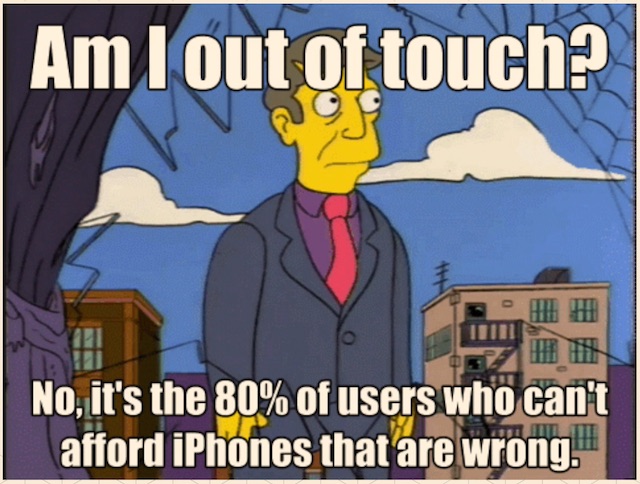Or more accurately:
Is the Web making itself irrelevant by making itself unusable on low end mobile phones?.
Alex Russell - The Mobile Web: MIA (Fronteers Conference 2019)
This is the latest edition of “reduce your JS-emissions” Alex Russell’s talk about the trends in the mobile web - but I think it’s the best and most compelling version yet as it reframes current trends in a slightly but more disturbing light.
Native apps have been threatening to make the Web irrelevant for some time now but some people believe “the War is over and the Web has won” - but nothing could be further from the truth if large parts of the Web don’t abandon the predominant desktop mindset sooner than later. Continuing to treat the Web as if it is primarily consumed through browsers on desktop computers could hasten the Web’s descent into irrelevance.
Viewing mobile first (not to be confused with responsive design) as some kind technological niche trend could be a big mistake when it needs to be treated as a survival strategy for the Web.
If you work in web development or plan to work in development - ignore the trends identified in this talk at your own peril. That being said there is so much going on here that it may be necessary to watch this talk twice to pick up on all the tidbits that are being offered.
-
Unfortunately he’s off to a bit of a slow start as he parades a number of topics that he would rather be talking about - but can’t because this topic is more urgent.
The Web is … the content that is currently reachable by following links and which can be experienced on most devices
-
The Web evolved on the single core model but in the mobile space cores have been getting, on average, slower, trading instead for more cores.
-
Computationally, mobile device usage outpaces desktop computer usage.
-
In 2014 mobile users were believed to be spending only 14% of their time on websites (flurry). That time has now dropped below 7% and is falling.
The Web is not essential to the future of computing on mobile.
- Desktop isn’t the growth market - mobile is
4.2 Minimum Functionality
Your app should include features, content, and UI that elevate it beyond a repackaged website.
2.5.6 Apps that browse the web must use the appropriate WebKit framework and WebKit Javascript.
- i.e. Apple is intentionally stalling the mobile Web on iOS by restricting the browser engine. Apple strategically underinvests in the mobile Web.
JavaScript specifically taxes users at the lowest end the most
-
The networks will save us!. Bad news:
- Increasing subscription density is slowing the networks down.
- Network speeds aren’t consistent globally even under the same protocol.
- The necessary 5G infrastructure upgrades are enormous and can be expected to take significantly longer than the 4G rollout.
-
And yet JS payloads have been increasing.
-
Responsive design did not work because it failed to displace the desktop mindset. The mobile experience was still being treated as a scaled down desktop experience.

Having money makes it possible to live and bear the Web today Not having (enough) money means you can’t get to it. JavaScript is a regressive tax on content. And it is our CO2. You have to have some of it.
-
Endnutzerleistungentwicklerprioritätenwahnvorstellung - The delusion that developers prioritize end user performance.
When the Web is allowed to compete, it can win.
























